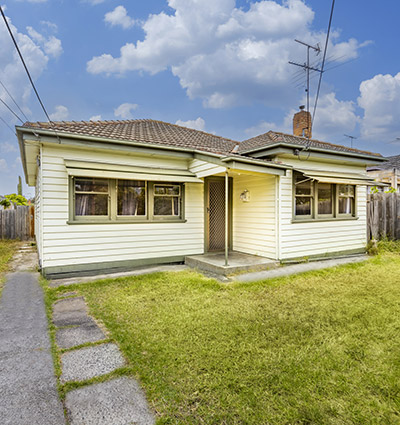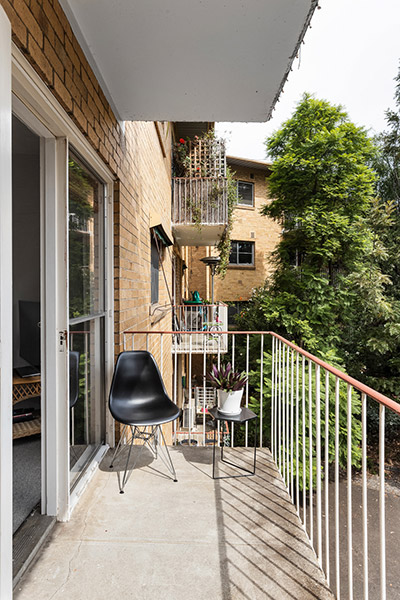Buying on a budget in Melbourne’s falling property market still a challenge
While Melbourne's property prices are still in decline, buyers and real estate investors on a tight budget can still expect to face a daunting challenge.
Houses are off the wish list for anyone looking to purchase a property in Melbourne with a budget limit of $500,000.
For those shopping for a property with such limited budget, even quality units close to the CBD are scarce at that half a million dollar price tag.
In Perth, Adelaide and Brisbane property buyers can find a house in a good suburb for that price, but that’s almost mission impossible in Melbourne.
Buyers can expect to be inspecting low-end units or terraces – in some cases unliveable – in suburbs like Footscray, Maribyrnong and North Melbourne. For houses, there’s a shortfall of at least $200,000. Minimum.
“The cheapest house we’ve just sold was in West Footscray for $740,000, a run-down weatherboard on about 465 square metres of land,” John Verduci, principal of West Footscray real estate firm, Trimson Partners told Australian Property Investor Magazine.
“I think that was a sign of the times for the market.
“No doubt two years ago, we would have got $850,000 any day of the week.
“In general, where we’re located, prices have dropped about 15 per cent.”

This Fontein Street, West Footscray, house recently sold for $740,000.
Trimson Partners’ core area includes suburbs in Melbourne’s west within 10 kilometres of the CBD, such as Footscray, Yarraville, Maidstone, Braybrook, parts of Sunshine and Seddon.
“Unless you’re really looking for a two-bedroom flat you’re not going to get much more.
“You might get a run down two-bedroom villa unit but that is really it, and it would be a bit further out west in terms of a unit, but certainly no houses.
“Median house prices are $850,000 - to get a house for $500,000 you’ve got to go out past Sunshine or even Caroline Springs; really west,” Mr Verduci said.
Oscar Jones, sales consultant for North Melbourne real estate group Jellis Craig gives a similar account for that suburb.
That compares to interstate options where half a million dollars, or even less, is still a realistic house price.
In Brisbane, 92 suburbs, including Ipswich, Moreton Bay, Redland Bay and Logan, have a median below $400,000.
In Adelaide, Hackham West, in the city’s south, has a median house price of $446,000, while in Perth's northern suburbs, Clarkson has a median house price of $469,000.

Oscar Jones, Sales Consultant, Jellis Craig Real Estate
“In Melbourne, the closest to $500,000 you get right now in house price would be an unliveable, Victorian, single front terrace on less than 100 square metres on a bad street, and that’s at around $750,000.
“Houses under $750,000 are very hard to find.
“The thing about those is, because they’re so few and far between, anything that is exceptionally cheap often still achieves a great price for what it is, due to the fact there’s so few options,” Mr Jones said.
“There’s one at the moment on Princes Street, $650,000 to $700,000, that’s been on the market for a while plus it’s had a few price reductions.
“That’s a two-bed, one-bath, single front terrace and its condition is very, very poor.
“That’s the kind of thing you’re looking at in the suburb; an unliveable property that at least needs six figures spent on it to make it liveable.”
Buying in a falling property market
Unless you really need somewhere to live then sit on your cash at least until the good times roll again in a couple of years’ time, Melbourne real estate agents suggest.
CoreLogic’s data shows values over the past year at 9.6 per cent below the record high of February 2022, and a decrease over the past quarter of 2.7 per cent and into February 2023, down by another 0.4 per cent.
CoreLogic’s Home Value Index found Melbourne’s unit median value was $585,365, compared to Sydney, $759,773, Brisbane $490,997, Hobart, 526,037 and Canberra, $595,564.
“The cheapest one-bedroom unit I have would be a 1960s-walkup in Maribyrnong for $250,000.
“After that, I have a two-bedroom, 10-year-old unit, also in Maribyrnong, for $460,000,” Mr Verduci said.
“It’s in Edgewater, so within a few minutes walk of Highpoint Shopping Centre, close to the Maribyrnong River, the tram is only two minutes away, it’s probably about eight kilometres from the CBD.
It’s not a huge apartment, just a basic two-bedroom, single bathroom, balcony, complex of about 50 or 60, so up to $500,000, that’s what you’d expect.”
In North Melbourne, $500,000 buys a one-bedroom apartment or a compromised two-bed.
“There’s a few factors that bring most two-bedroom apartments above $500,000 but if we’re not ticking those boxes they’re falling below,” Mr Jones said.
“For example, no car park, one bathroom on a not so desirable street, or up a few flights of stairs and so on, so that’s the justification for the two I have under $500,000 at the moment.
“They’re the only options you have if you’re looking for anything other than a one-bedroom apartment in North Melbourne.”
Mr Jones currently has listed a two-bed, one-bath, one car park unit in North Melbourne for $489,000 and a one-bed, one-bath, no car park for $360,000.
It’s a long way from the new, modern two-bedroom apartments in small complexes available for that price within six kilometres of the Perth CBD, for example, in suburbs such as West Leederville, Mount Hawthorn, Highgate and North Perth.
Melbourne rental yields lagging
CoreLogic found annual growth in Australian rent values were up 10.2 per cent in the year to December, a record high.
The most rapid annual rise is evident in unit rents across Sydney, Melbourne and Brisbane, where rents have increased around 14 to 17 per cent annually.
Gross yield in Melbourne rentals was at 4.3 per cent compared to 6.2 per cent in Perth, 7.3 per cent in Darwin, 4.1 per cent in Sydney or 5.3 per cent in Brisbane.
In the sub-$500,000 market, Mr Jones said he’d had multiple conversations in the last couple of months with buyers who are on the fence about renting or buying.
“A lot of the cheaper units are becoming overpriced, because everyone wants something that’s really cheap in a particular suburb.
“That supply and demand factor is getting more people involved in the apartment market, particularly when comparing their house repayments to the current weekly rent, it starts to look like a much more realistic choice.
“There are some that have just shifted to buying, purely on the basis of what their costs on repayment will be versus, renting.
“When you’re paying so much rent for a property that you shouldn’t be, its kind of easy to be incentivised by it.”
Something different, however, is happening in the Melbourne’s west.
“I find if anything, people have gone out of the buying market into the rental market due to cost of living, and interest rate increases,” Mr Verduci said.
“In saying that, there’s not really that much of an increase in stock, just yet.
“I would have expected with what’s happened in the current economic climate, and people coming out of those fixed rate mortgages would be feeling the pain and therefore selling but we’re not seeing much of that yet.
“During the Covid pandemic period, there was a glut of houses for the rental market and we had almost a 10 per cent vacancy rate, whereas now we’re under 1 per cent and people are bidding more money just to get a home.”
Whatever trends are at play in Melbourne’s property market, both realtors are optimistic.
“We’re seeing some great results despite a lot of the sentiment among buyers and what people are reading in articles and so on, and we really are seeing consistent uptrends in results and activity,” Mr Jones said.

An O'Shanassy Street, North Melbourne, unit on the market for $360,000.
“I think a lot of it is cushioned with the general shortage of stock but I think a lot of us are anticipating good things in west and north Melbourne where the market’s only strengthened in terms of apartments, but with houses there’s just so few on the market it’s hard to get an accurate gauge.
“We’re anticipating that things will have a bit of a spurt towards the end of the year, in the next six months, particularly after the end of this financial year.”
Mr Verduci is patiently waiting for change for the better.
“It’s not going to stay like this.
“There’ll always be buyers and sellers, but unfortunately today it’s a process of educating the seller to forget what the neighbour got two years ago, forget what that house around the corner got a year-a-half ago.
“We cannot turn back the clock, and if you’re going to sell on a low, you’re going to be buying on the low as well.
“It’s not isolated purely to the seller; the buyer does get advantages.”
“I would say to buyers if they can hold out at least two years, and then we’ll start seeing the good times come back.”
He also feels the market would benefit from the Victorian state government changing or withdrawing stamp duty.
“Housing affordability is constantly in the papers.
“I think the only way our state government could help at least is stamp duty, which is getting ridiculous.
“Let’s face it, some houses are sold three times within five years, probably some are sold once in 30, but the government gets a lot of money for absolutely nothing.
“It’s a simple transfer from one name to another in the title’s office and the government puts out their hand for an average above $30,000.”




















